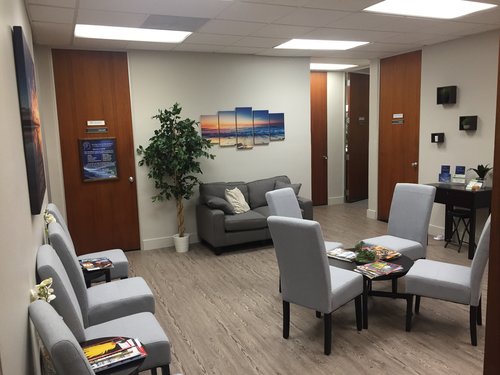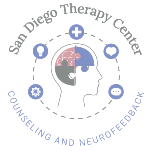We specialize in working with children, teens, and adults who are struggling with symptoms of Anxiety, ADHD, Autism Spectrum Disorder, Trauma and PTSD.
Neurofeedback is a type of biofeedback that uses technology to monitor brain activity and provide real-time feedback to help regulate brainwaves and brain functioning.
This technique can help individuals with trauma-related symptoms such as anxiety, depression, and flashbacks. Both trauma-informed counseling and neurofeedback are designed to help individuals overcome trauma without re-traumatizing them. Overall, trauma-informed counseling and neurofeedback are effective tools for overcoming trauma and can help individuals reclaim their lives.
Benefits of Neurofeedback
Contact Us today to find out if Neurofeedback, a non-medication based treatment, is the treatment for you or someone in your family.
THERAPEUTIC APPLICATIONS FOR SAN DIEGO NEUROFEEDBACK
HOW DOES NEUROFEEDBACK WORK?
Monitoring devices, or electrodes, provide moment-to-moment information about your physiological and nervous system functioning via brain wave activity (EEG). The brain wave activity is then shown back to the person and his/her brain via visual, auditory, and tactile feedback, translated by the equipment. Your brain waves are shown back to your brain in the form of feedback during a video game or movie. The feedback (sounds, visual changes, tactile changes) rewards the brain for having activity in areas we wish to promote and is not rewarded for having activity in other inappropriate areas we wish to diminish. The brain needs a range of activity to observe slight changes that occur during the brain training so it can learn effectively. We do not input anything into your brain, nor can we read your thoughts. It’s like showing a mirror to the brain so the brain knows what areas and functions need to work better.


WHAT WILL I FEEL?
Most individuals feel calm and focused after each San Diego Neurofeedback session. After approximately ten to twenty sessions, individuals are likely to see and feel changes in the body and brain. In some cases, individuals may not necessarily feel differently as many of the changes are in areas where cognition may not access yet. At this point it is recommended to continue training to solidify the improvements and create long-lasting changes.
Every brain is different and will activate different areas as necessary. Be sure to tell your neurofeedback specialist of any uncomfortable or unwanted feelings that may occur, such as a headache, irritability, or feeling groggy as these are helpful to understand in your training and can be corrected during your session. You should leave the neurofeedback session feeling comfortable, calm, and focused, as well as experience a great night’s sleep that evening.
HOW IS SDTC DIFFERENT?
San Diego Therapy Center (SDTC) is unique due to our team approach to your care and our weekly clinical review process. Each week our PhD and PsyD San Diego Neurofeedback specialists meet with our Master’s level associate therapists/technicians to review and discuss each individual’s case. Thus, each client has the combined knowledge of several clinicians reviewing their progress, treatment, symptoms, and suggesting changes, as well as making important referrals to clients for external assessment, support, and resources to improve the client’s success. As a team, every clinician is aware and up to date of every individual’s treatment, protocol and changes. This also means that you and your family are able to schedule an appointment any day and time that works with your schedule and receive the same individualized, progressive treatment.
IT CAN BE NERVE-WRACKING TO TRY SOMETHING NEW, ESPECIALLY WHEN IT COMES TO YOUR HEALTH.
NEUROFEEDBACK IS SAFE, NON-INVASIVE, FREE OF SIDE EFFECTS, AND AN ALTERNATIVE TO DRUGS AND MEDICATIONS. HERE IS A CLIENT’S PERSPECTIVE AND EXPERIENCE WITH NEUROFEEDBACK AND THE REWARDS IT CAN BRING.

